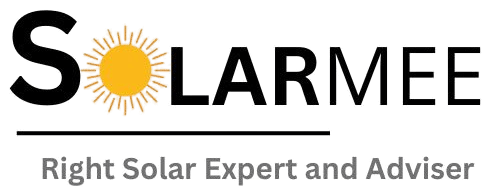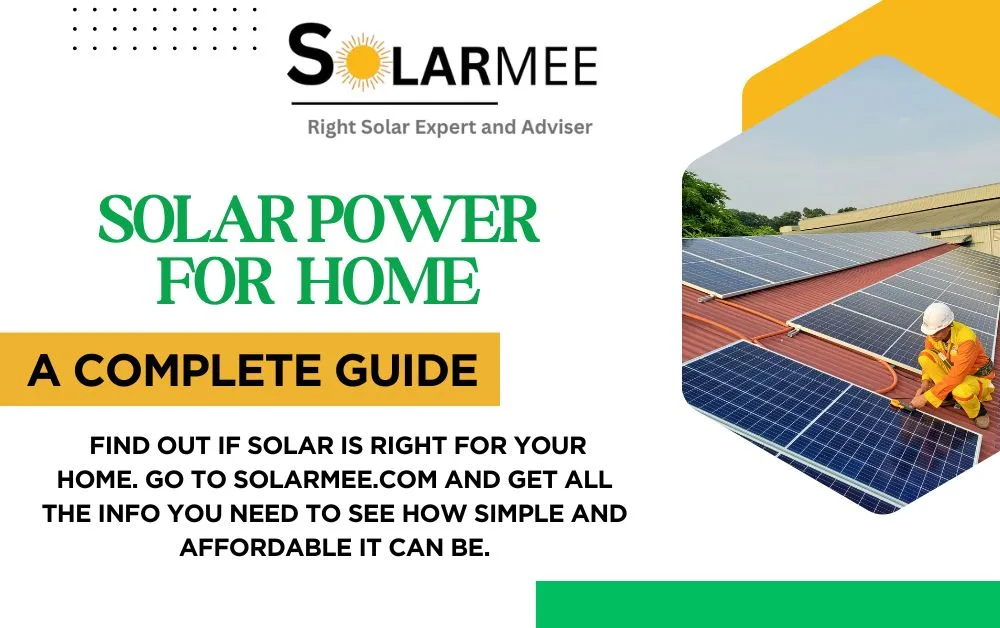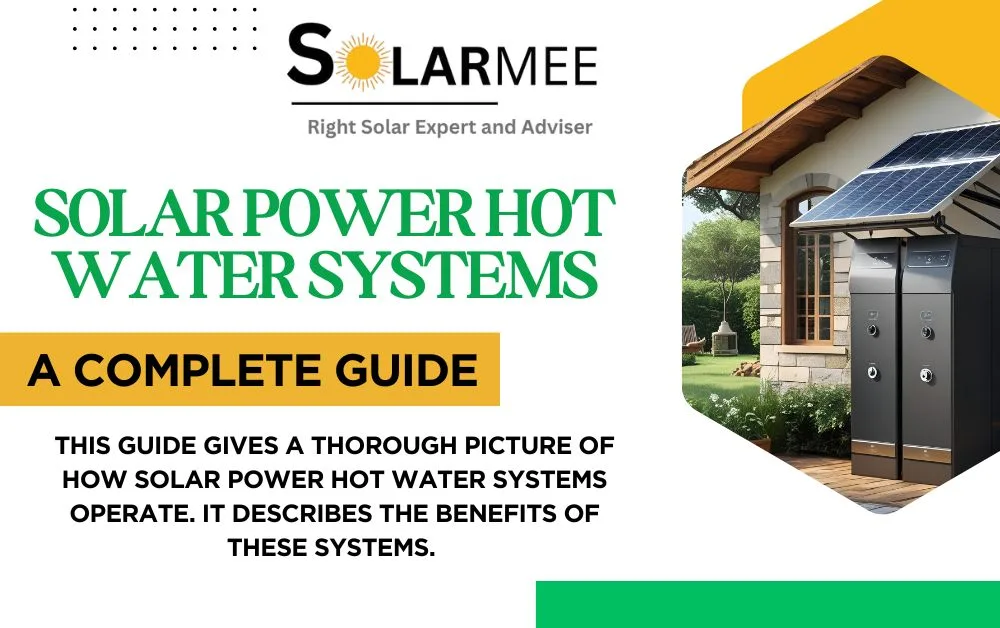Have you ever pondered how the sun’s rays could light your home or power your electronics? That is the wonder of solar power! Solar power emanates from the sun, and we collect it using special contraptions called solar power satellites. These contraptions convert sunlight into electricity that you can absorb daily. In recent years, solar power has gained significant momentum worldwide.
Why? One significant reason is that regular power from power companies is becoming exorbitantly priced. And in this era of skyrocketing energy costs, one way families are finding to conserve cash is by conserving solar energy. One way to achieve this is by setting up a solar array and powering your home with free solar electricity.
What is very thrilling is the environmental benefits of solar energy. It is nothing at all like burning coal or gas, which not only pollutes our air but also causes climate change. Solar energy is clean and green. It releases not even a single harmful gas.
This all-inclusive guide provides all the essential information to get one started with solar power in the home.
This guide imparts the basic knowledge necessary to understand how solar panels work, what types exist, how much they cost, and what sort of work is involved in putting them up. It also informs readers about the types of assistance that might be available from the government and offers several helpful maintenance tips.
All this serves to make the somewhat daunting prospect of going solar seem fairly easy and achievable. Large parts of the body narrate storytelling, chapters detailing different users of these solar panels.
Understanding Solar Power for Homes
How Solar Power Works
Residential solar power systems start with solar panels. A single panel consists of numerous cells, and the most typical sort of cell is a photovoltaic (PV) cell. PV cells turn sunshine directly into electric power. You could see it as magic: sunlight transforms into energy to power your appliances and lights. Batteries gather energy to keep the extra electricity for usage at night or on overcast days. This straightforward arrangement allows you to tap into the sun’s might to electrify your residence.
Home vs. Large-Scale Solar Systems
A solar power system made just for one home generates enough electric current only for that family. It uses a small number of solar panels, which current designs have mounted on roofs (though future ones might use ground-mounted panels), to do the job. A “solar farm” has solar panels operating at the same basic principle, but on a much larger scale. These almost industrial systems can have hundreds or thousands of solar panels spread across a field and interconnected in ways that generate enough electricity to power a number of homes or businesses.
They can be quite complex but also quite efficient. Solar panel systems for residences are simpler. They usually work with what’s called a “grid-tied” system, which means you’re still pretty much dependent on the electric company. But at least the panels on your roof aren’t polluting anything, and when you use the power from them, you’re not paying quite so much as you would be if you were using electricity from a coal plant.
Benefits Outside of Financial Savings -Catching sunshine and transforming it into practical energy helps your home more than just lower your monthly utility bills. It enables you to keep consuming electricity should the power grid fail and lowers your dependence on utilities. Solar panels, even in their most primitive guises, are equipped with batteries; hence, this is conceivable.
Types of Solar Power Systems for Homes
Home-Based Solar Power System Kinds
Deciding to power your house with solar energy will let you save significant amounts of cash. There are three basic alternatives for solar system selection: hybrid solar systems, off-grid hybrid solar systems, and grid-tied solar systems. Everyone has particular benefits and is appropriate in certain situations.

Grid-Tied Structures
What, therefore, is a Grid-Tied System? It’s essentially a mechanism connecting your solar panels to the nearby power grid. Your home is powered by your solar panels’ electricity. You draw the balance from the grid when your panels lack enough electricity. Should your panels generate more power than you need, it travels back to the grid, and you might get credits on your power bill for that excess electricity.
Advantages:
- Reduces electrical expenditures.
- Simple maintenance and installation.
- You can get bonuses for surplus power.
Cons:
Should there be any errors with the power grid—like a blackout—there would be no electricity. Such are the circumstances under which we completely rely on the grid.
Acceptableness:
Perfect for homes in metropolitan or suburban areas where electric supply is consistent and power outages are infrequent.
Systems Off-Grid
Working separately from the electric grid, an off-grid system is independent. Your solar panels instead send their power to batteries. These batteries help to store energy for times without the sun. They are ideal to have as night descends or when overcast days lower solar panel performance, for instance.
Advantages:
- Electricity supply for times of blackout emergencies.
- Saves money and stores surplus energy.
- Flexible for all sorts of situations.
Cons:
More expensive than solar power systems linked to the grid.
Batteries that can be recharged wear out. They have a finite number of cycles in which they can be charged and then discharged.
Suitability:
Great for homes that want backup power while cutting costs—but still want to be plugged into the grid.
Solar System Comparison Table
| System Type | Connected to Grid? | Battery Needed? | Best For | Cost |
|---|---|---|---|---|
| Grid-Tied | Yes | No | City homes with a stable grid | Low |
| Off-Grid | No | Yes | Remote homes with no grid access | High |
| Hybrid (with Battery) | Yes | Yes | Homes want backup power | Medium to High |
Cost of Solar Power for Homes
Panel Quality: Solar panels are not all the same. Quality ones could cost more, somewhere around $1 to $1.50 per watt. Top types like monocrystalline make more power and can keep going for 25–30 years. The less costly ones, like polycrystalline, may not last or work as well, priced near $0.90 to $1 per watt.
System Size: The larger your solar set-up, the larger your home will be. For a small house, a small system (3 to 6 kW) will be cheap. For a big house to have more panels (7 to 10 kW) will be expensive.
Place- Your residence affects the factor, and Fewer panels are needed in sunny places like Arizona, and so it seems cheap. In less sunny places like Washington, more panels might be needed, thereby translating into higher costs. Installation and permission fees also vary depending on your location.
Avg. Cost- Before any reductions, a standard home solar system (6–8 kW) in the U.S. costs $15,000 to $25,000 in 2025. Per watt, it costs anything from $2.50 to $3.50. All over the world, prices change. In Europe, they go from $1.50 to $2.50 a watt. In Asia, they are from $1 to $2. In the United States, sunny places like California ($2.29–$3.33 a watt) or Arizona ($2.05–$2.79 a watt) are cheaper than spots like Rhode Island ($3.17–$3.61 a watt).
Help From the Government- Governments cut the cost of solar power with help. In the US, a tax help gives you 30% off a new system (like, $6,000 off a $20,000 system). Some states give money back or tax help that cuts prices by 30–60%. Net metering lets you sell extra power back to the grid, making it even cheaper.
Cost Cuts and Paybacks Solar cuts your power bills each month right away. Most folks pay off their systems in six to ten years. Then, you get free power for fifteen to twenty years, and save $20,000 to $90,000 over time. Plus, solar can make your home’s worth go up!
Choosing the Right Solar Panels and Equipment
Choosing the right solar panels and equipment for your home is important for two main reasons: to save money and to create energy, lots of energy, and pretty much all the time. That’s how solar is supposed to work. They are not simple devices, nor is the process of selecting them or installing them simple. You could also argue that the solar industry makes a pretty good case for its non-simplicity by the selection of panels and equipment that are available.
Factors to Consider
How well it works: How well a panel changes sun rays into power tells its value. High work rate (20–24%) panels, like the monocrystalline, use a small space to create more power, great for tiny roofs. Low work rate (15–18%) panels, like the polycrystalline, need more space and give less power, but are cheap. If you have a lot of space, they might be a good choice.
These panels last for 25 to 30 years. When you get the best ones, they only drop in power by 0.25 to 0.5 percent yearly. So, they work well for a very long time.
Top Brands/Models (2025)
- Maxeon 7: 24.1% good at making power, 445W power, 40-year promise. Best for small roofs, but expensive.
- Canadian Solar TOPHiKu6: It has 23% efficiency, gives 470 watts, and comes with a 25-year promise. It’s cheap but good.
- Panasonic EverVolt: It offers 22.2% efficiency, gives 430 watts, and also has a 25-year promise. Great for hot climates.
- REC Alpha Pure: 22.6% efficiency, 470W, 25-year warranty. Good in low light.
- Qcells Q.Tron: 22.5% power, 440W, 25 years safe. Liked and saved money.
- Battery Types & Right Fit- Storing energy helps keep lights on at night and when cuts happen. For small homes, the Enphase 5P (5 kWh) works well. For big homes, the Tesla Powerwall 3 (13.5 kWh) is best.
Make sure to match the energy store to the home’s daily need and the solar system’s top work in the late day.
Installation Process and What to Expect
Installation Process and What to Expect
Obtaining solar energy for your residence is thrilling! The processing of it can be broken down into elementary steps, and the selection of your installers can hinge upon a few straightforward criteria.
Steps for Installation
Site Check: An expert visits your home to look at your roof. They check its size, angle, and how much sun it gets. This helps them figure out the best number of solar panels and where to put them.
System Plan: The person setting up the solar system designs a plan. They decide how many panels you need and how they will link to your home’s power.
Licenses: The installer receives permission from your municipality. This assures that all jobs meet codes and are safe.
The structure and format of the source material remain unchanged:
Installation: Your roof or yard gets solar panels. Wiring and a device called an inverter are installed as well, to convert solar energy into electricity for use in your home. This all takes about 1–3 days.
Last Connection: The electric company checks your system and hooks it up to the power grid. Then voilà! Your solar panels start producing electricity.
Choosing Certified Installers
Pick people who have proof of skills, like NABCEP (the group for skilled energy people in North America). Look at their past jobs online and ask them to give you a list of past clients. Be sure they have a lot of know-how in this area and are both happy and able to back their work (5–10 years).
Safety and Upkeep
Solar energy setups are safe, yet they need some watching. People who set them up say the wiring is safe enough to never start a fire. If needed, clean the panels every six to twelve months to keep the solar system working well; they use normal cleaning gear and methods. Like any part of your house, check solar panels after big storms to make sure they’re not damaged when the roof is. But, all in all, solar setups don’t need much care, and they last about 25 to 30 years.

Solar Power for Renters & Rental Properties
Not just homeowners can enjoy the benefits of solar energy. These days, renters can also use many forms of clean, solar power. Even if you can’t install solar panels on your roof, there are ways to use solar power for renters. One widely accepted option is community solar.
In this arrangement, a large solar farm produces electricity for many shared users. You pay for the portion of the power it makes that is added to your electricity bill. The cost is discounted because the solar farm is doing the generating; you just share in the output. Portable solar kits are another option.
These are not shared devices; you use a portable solar kit directly. The kit could be a small panel that you set on a balcony or in a window, or a more robust setup that could go on a rooftop. These solar arrangements charge your devices and do other solar things.
Renters can benefit greatly from solar energy because it typically saves them money. How can the solar industry help landlords beat the biggest hurdle in convincing their tenants to go solar?
Tenants can choose between lease and purchase models. Under a lease, you pay a nominal monthly fee to use solar power (without buying the panels). Under a purchase contract, you buy the solar system yourself and take it with you if you move.
Tips for Maximizing Your Solar Investment
Installation of solar panels in regions that receive the most sunlight, such as a south-facing roof free from trees and buildings that could cast a shadow, is known as panel layout and maintenance. If you want to orient the panels at an angle, a perpendicular solar panel is roof tilt, in a plane 30 to 40 degrees from horizontal, then a solar panel is clean if it’s perpendicular to your line of sight. Year-round, your solar system ought to be producing energy!
Behavior Regarding Energy Use- Try to use big power tools like washing machines and dishwashers when the sun is out. That’s when your solar panels work the best and make the most power. This way, you can use more of the electricity you make and might save more on your power bills each month. Turn off lights and devices if you’re not using them. Swap to LED lights; they help your solar setup do more and use a lot less power than old-style bulbs or CFL bulbs.
Performance of the monitoring system- Using a phone application or equipment included with your solar system, check its energy output weekly to attempt to find any production flaws, such as constant low power output.
Common Myths & Misconceptions
Some wrong ideas about solar power confuse people’s grasp of this technology. Let’s clear up the misunderstandings people have about solar energy!
Solar is ineffective in gloomy settings. This is off. Though at a slower rate, solar panels continue to produce power under cloudy weather. Solar energy is rather popular in countries like Germany, where it sometimes rains.
Conclusion
Opting for solar energy is an intelligent decision! It slashes your power costs, with many satisfied customers reporting savings of 50% or more. Solar is an excellent energy source for “the planet, reducing pollution, and combating climate change,”
as the National Renewable Energy Laboratory puts it. It even increases your property value. And if you don’t own your home? No problem, says the National Renewable Energy Lab, citing community solar programs and “solar opportunities for renters” as viable alternatives.
Make a Change Today! Find Out If Solar Is Right for Your Home. Go to solarmee.com and get all the info you need to see how simple and affordable it can be. Whether you own your home or rent, there’s a solution for you that can work within whatever space Constraints you have. Not only can we help you find a way to make it work financially.

“Hi, I’m Ishita ,a content writer who loves turning ideas into engaging stories. I specialize in writing blogs, articles, and website content that connects with readers. Over the past few years, I’ve worked with startups and companies to create clear, creative, and impactful content. When I’m not writing, you’ll usually find me reading or exploring new ideas for my research. This website is my space to share my work and connect with people who value quality writing.”




